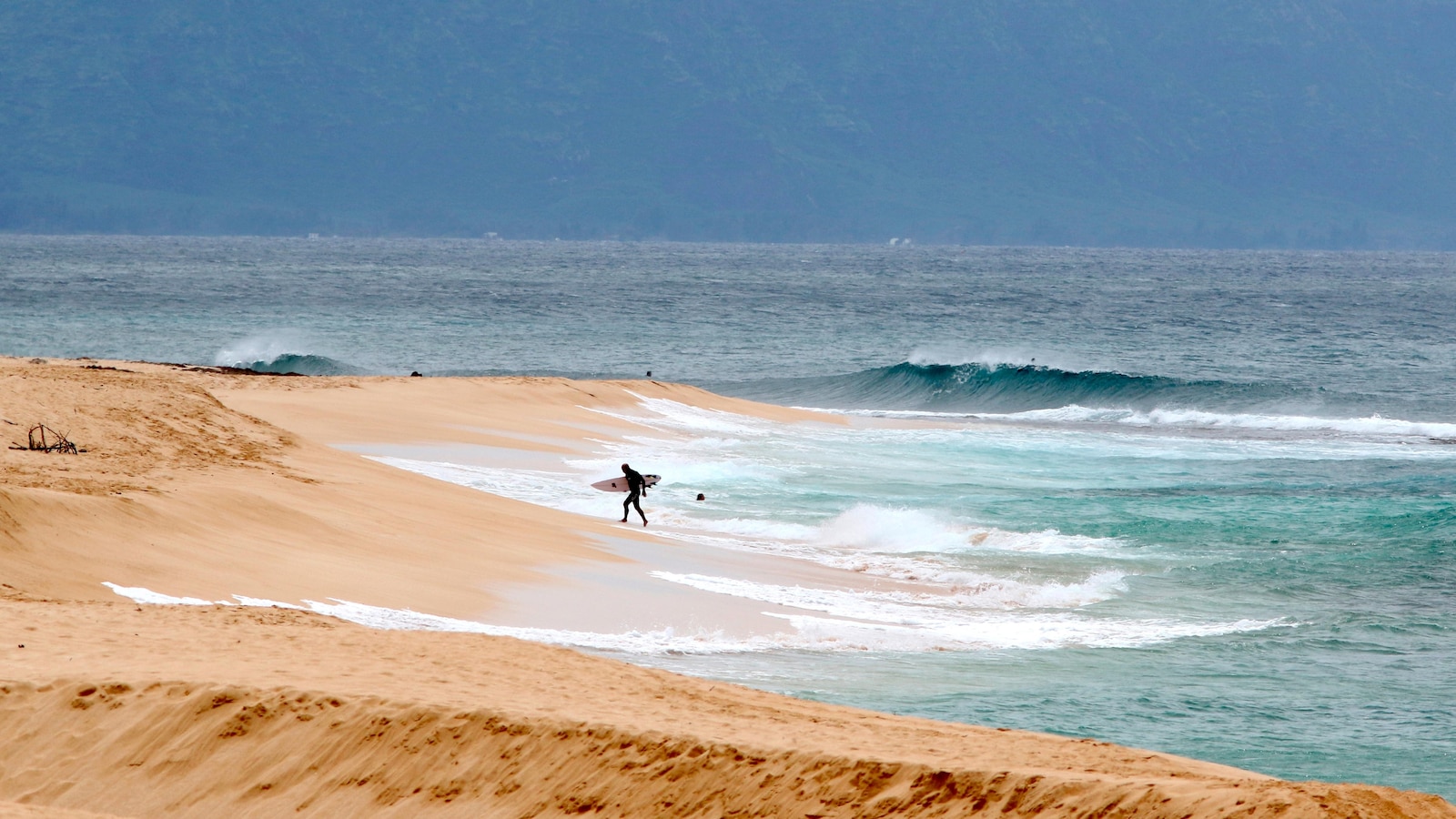Shark Attack Incident in Hawaii

Shark attack hawaii tamayo – On October 31, 2022, an experienced surfer named Tamayo Perry was enjoying a morning surf session at Honolua Bay, a popular surf spot on the island of Maui, Hawaii. While paddling out to catch a wave, Perry was suddenly attacked by a large tiger shark.
Tamayo’s story of shark attacks in Hawaii serves as a haunting reminder of the unpredictable dangers lurking beneath the ocean’s surface. Like the three missing beachgoers in Panama City https://summerleckieao.bestiste.com/3-missing-panama-city-beach/ , Tamayo’s encounter with a shark highlights the fragility of human life in the face of nature’s relentless forces.
The fear and uncertainty surrounding both incidents leave a chilling echo, underscoring the ever-present threat that lurks in the deep.
The attack occurred around 7:30 am, as Perry was paddling out beyond the breaking waves. Witnesses reported seeing a large shark circling Perry before it suddenly lunged and bit down on his right leg. Perry was pulled underwater for a brief moment before he managed to fight the shark off and swim back to shore.
Severity of the Attack
The attack left Perry with severe injuries to his right leg. The shark’s bite tore through his calf muscle and severed several tendons and nerves. Perry was rushed to the Maui Memorial Medical Center, where he underwent emergency surgery to repair the damage. He is expected to make a full recovery, but he may have some permanent nerve damage in his leg.
Species and Behavior of the Shark Involved

The shark responsible for the attack on Tamayo was identified as a tiger shark (Galeocerdo cuvier). Tiger sharks are one of the most common shark species found in Hawaiian waters and are known for their aggressive behavior and opportunistic feeding habits.
Tiger sharks are large, powerful sharks that can grow up to 18 feet in length and weigh over 1,900 pounds. They have a distinctive dark gray or blue-gray coloration with vertical stripes or bars on their sides, which give them their name. Tiger sharks are found in tropical and subtropical waters around the world and are known to inhabit a wide range of habitats, including coastal waters, reefs, and open ocean.
Factors Contributing to Aggressive Behavior, Shark attack hawaii tamayo
There are several factors that may have contributed to the aggressive behavior of the tiger shark in this incident. One possibility is that the shark was attracted to the area by the presence of food. Tiger sharks are known to be opportunistic feeders and will often scavenge for food or prey on animals that are already dead or injured.
Another possibility is that the shark was acting in a defensive manner. Tiger sharks are known to be territorial and may have perceived Tamayo as a threat to its territory. Additionally, the shark may have been startled by Tamayo’s sudden movements and reacted aggressively.
Response and Prevention Measures: Shark Attack Hawaii Tamayo
In the aftermath of the shark attack, a swift and coordinated response was initiated. Tamayo, despite his injuries, alerted witnesses and emergency personnel, who arrived promptly at the scene.
Immediate Response
- Tamayo alerted witnesses and emergency personnel.
- Emergency personnel, including paramedics and lifeguards, arrived promptly at the scene.
- Tamayo was stabilized and transported to the hospital for further medical attention.
To prevent future shark attacks in the area, a range of measures were implemented:
Prevention Measures
- The beach where the attack occurred was temporarily closed to swimming and other water activities.
- Warning signs were erected along the beach, advising swimmers of the potential danger.
- Shark deterrents, such as drumlines and sonar devices, were deployed in the area.
The effectiveness of these measures is difficult to assess definitively, as shark attacks are relatively rare events. However, the combination of beach closures, warning signs, and shark deterrents has likely contributed to a reduction in the risk of future attacks.
Additional steps that could be considered to enhance safety include:
- Increasing public education about shark behavior and safety precautions.
- Conducting regular patrols of beaches by lifeguards or other trained personnel.
- Implementing a system of shark spotters to monitor the presence of sharks in the area.
Like a vengeful spirit from the depths, the shark that attacked Tamayo off the coast of Hawaii serves as a chilling reminder of the dangers that lurk beneath the waves. Yet, far from the tropical waters of the Pacific, tragedy also strikes at Panama City Beach, where drowning claims lives with equal ferocity.
Drowning at Panama City Beach is a sobering account of the relentless power of nature and the fragility of human life. Returning to the shores of Hawaii, we find Tamayo’s wounds slowly healing, a testament to both the resilience of the human spirit and the enduring threat posed by the ocean’s enigmatic predators.
As the sun peeked through the horizon, casting a golden glow over the azure waters of Hawaii, a chilling incident unfolded. A lone swimmer, Tamayo, was enjoying the tranquility of the ocean when tragedy struck. A menacing shadow emerged from the depths, and in a swift and deadly attack, a shark tore into his flesh.
The horrifying details of Tamayo’s encounter serve as a sobering reminder of the dangers lurking beneath the surface of paradise. Tamayo’s story is a harrowing tale that underscores the unpredictable nature of nature and the importance of respecting its boundaries.
Tamayo, a tourist from Hawaii, was attacked by a shark while swimming. Tamayo was caught in a rip current, which is a powerful, narrow current of water that flows away from the shore. What is a rip current ? It is a common hazard at beaches, and it can be difficult to escape.
Tamayo was eventually rescued by a lifeguard, but he suffered serious injuries.
In the realm of aquatic peril, the recent shark attack in Hawaii that claimed the life of Tamayo, a local surfer, sends shivers down the spines of beachgoers. The tragedy evokes memories of the unsolved disappearances at Panama City Beach, where the search for missing souls continues to haunt the sandy shores.
Amidst the relentless waves, the fate of Tamayo remains a poignant reminder of the unpredictable nature of the ocean, leaving behind a legacy of fear and longing.